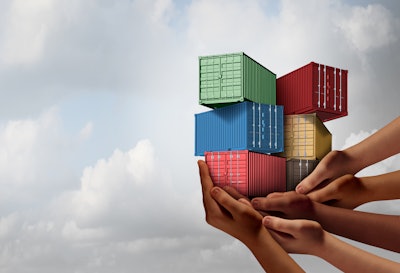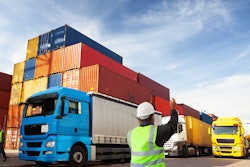
In early March, the Federal Reserve Bank of New York announced that pressures on global supply chains have dropped to a new low since August 2019, before the COVID-19 pandemic, according to its monthly Global Supply Chain Pressure Index (GSPCI).
This has led the bank, and many in the industry, to conclude that the global supply chain conditions are returning to normal following all time index highs in 2021 and the start of the war in Ukraine in early 2022.
With an eye on what’s happening on the ground at ports and with manufacturers and distributors, there are certainly some hopeful and telling signs that, on the whole, we’re nearing a return to normalization. But the shipping industry might not be out of the woods just yet.
The swing of supply and demand
As workers have returned to their workplaces and production has ramped back up post-pandemic, manufacturers and vendors are shipping again, and the overall demand for goods remains stagnant. The strain on shipping and logistics is moving toward normalization compared to the early stages of the pandemic. But solving for one crisis in the pandemic-era supply chain begets others.
For one, consumer behavior has changed, impacting the tides of supply and demand. Now feeling more comfortable to travel again and roam more freely about the world, U.S. consumers are spending their money on experiences and tourism rather than goods. At the same time, the economic uncertainty hovering between slowdown and recession has made consumers generally wary of their total spending.
The pandemic-era demand for goods has shifted to an excess supply, and those goods have ended up stuck at port with nowhere to go. With the swing of supply and demand, the container shortage of 2021 and 2022 has given way to a warehouse capacity shortage that will undoubtedly cause supply chain issues in 2023.
New pressures at ports (and beyond)
Post-pandemic changes in supply and demand directly impact what happens at ports. And there are a few key changes of which logistics managers should take note.
One positive change and sign of normalization at ports is the cost of shipping containers. During COVID-19, container rates were at an all-time high, with some carriers asking $18,000 per container. Interestingly, a part of those shipping container price hikes were passed along to consumers, seeding an early cause of the economic inflation consumers are currently experiencing. Today, containers have returned closer to their pre-pandemic prices, around $1,200-$1,500.
However, paired with the excess of goods and warehouse shortage, even though the price of containers has normalized, ports still have a supply chain problem. With a warehouse shortage, haulers have nowhere to bring the goods once they arrive, so containers remain at the port, filled with goods, clogging up the terminal and unable to move along the supply chain. This could result in huge container penalties at the port, on top of any applicable demurrage charges for manufacturers, costs that could be passed on the to the buyer. Distributors also will continue to divert ships from popular but overwhelmed ports like Los Angeles and Long Beach, in favor of more efficient alternatives at ports like New Orleans, Savannah and Charleston that have greater capacity.
One trend we could see return in 2023 is the vertical expansion of mega-retailers into back into ocean cargo transportation. As a way to circumvent the supply chain delays and port backups caused by the pandemic, these deep-pocketed distribution giants commissioned their own fleets of ships to keep up with demand. Though consumer demand now wanes, the inflationary cost of shipping is set to increase, so mega-retailers already versed in cargo transportation could return to chartering their own ships, to keep costs low and bypass port delays.
The logistics staffing shortage continues
The pandemic upended so many areas of business, from where and how we work to the rhythms of supply and demand. One pandemic-induced shift that has not, and likely will not, normalize in 2023 is the growing need for talent.
The staffing shortage in logistics services is a problem that unfortunately will get worse before it gets better. One longtime problem in the freight industry – the trucker shortage – is particularly consequential to the state of “normal” as distributors work to respond to demand. The port-based warehouse shortage will only amplify the strain on talent in the logistics industry, especially as home delivery services continue to grow.
The pandemic brought on a global reckoning of company culture for employees – there’s no “normalizing” this particular change. Companies must continue to place emphasis on employee retention, recruitment, and long-term career investment and growth to keep the system running smoothly and on-time.
Making smart investments in the "new normal"
The supply chain wouldn’t be a “chain” if all these forces – economic recession and inflation, supply and demand, port and warehouse capacity, staffing – weren’t intertwined. Pull on one string, and everything else shifts. To say the supply chain is normalizing, though it may be true in one sense, is a bit more complicated when viewed in totality. A recession would naturally fix some of these problems in the short term, but not necessarily in the long term.
While there is no all-encompassing panacea for the post-pandemic supply chain, manufacturers and distributors continue to be vigilant and resourceful in finding solutions. Investments in technology, infrastructure, people and culture will remain essential for businesses that want a place at the table in the future. The “old ways of doing things” must stay where they are, in the past; even as prices or trends return to normal, our industry’s approach to solutions must advance.



















